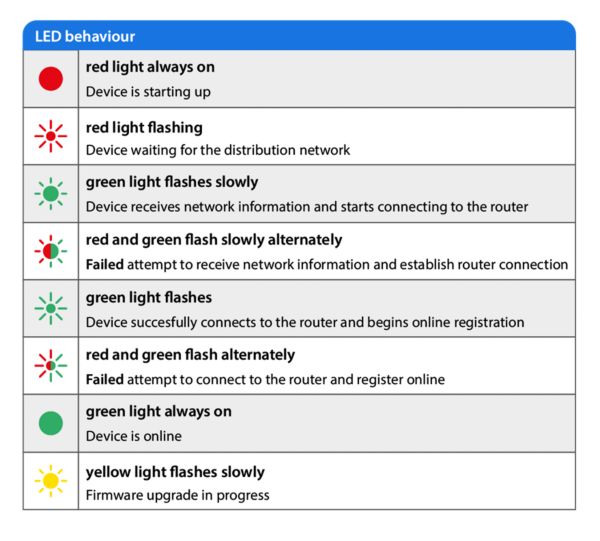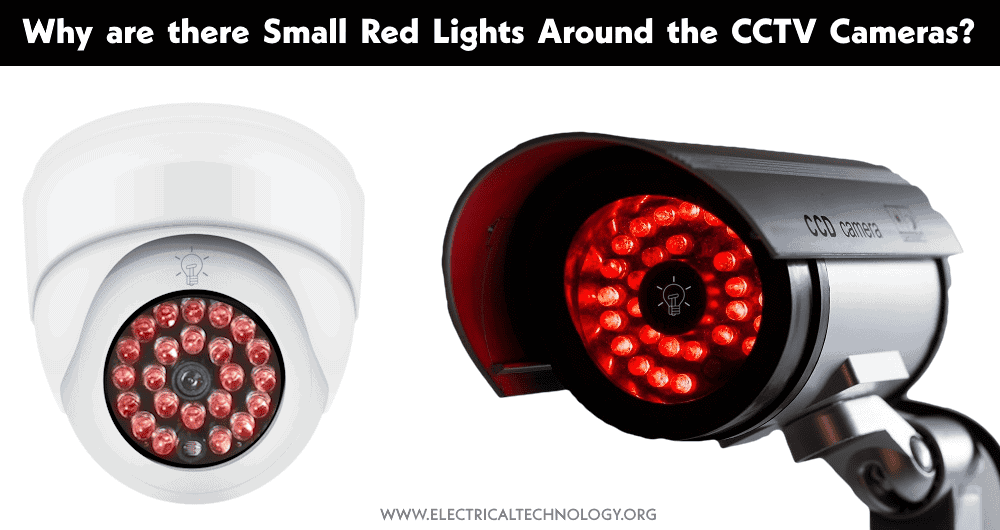Red Light on Camera Meaning: Uncover the Mystery Behind It

Seeing a red light on your camera can be confusing. Is it recording?
Is there an issue? Let’s explore what that red light means. Cameras are everywhere today, from smartphones to security systems. But what does it signify when a red light appears on your camera? This small but crucial detail can signal different things depending on the device.
Whether you are concerned about privacy or just curious, understanding this light’s meaning can be very useful. In this post, we will demystify the red light on cameras, explaining its various indications, and what you should do if you see it. Stay with us to get clear answers and ensure your camera’s optimal use.
Introduction To Red Light Cameras
Red light cameras are an important part of road safety. They help reduce accidents at intersections. Many drivers have seen them, but not everyone knows their purpose.
Purpose Of Red Light Cameras
Red light cameras aim to catch drivers who run red lights. They photograph vehicles that enter intersections when the light is red. This helps to reduce accidents and injuries. Drivers know they may be caught. So, they are more likely to obey traffic signals.
History Of Red Light Cameras
Red light cameras have been around for decades. The first systems appeared in the 1960s. They were not very advanced then. Technology improved over the years. By the 1990s, red light cameras became more common. Now, many cities use them to improve road safety.

Credit: www.philips.co.in
How Red Light Cameras Work
Red light cameras play a crucial role in maintaining road safety. They help reduce accidents by monitoring traffic at intersections. But how do these cameras work? Let’s explore the detailed workings of red light cameras.
Detection Mechanism
Red light cameras rely on sensors embedded in the road. These sensors detect vehicles crossing the intersection after the light turns red. The sensors use various technologies like inductive loops or radar. They accurately capture vehicle movement, ensuring precise detection.
Camera Activation Process
Once a vehicle is detected running a red light, the camera system activates. The system captures multiple images of the offending vehicle. These images include the license plate and the vehicle’s position. The camera also records the date, time, and duration of the red light violation.
Some red light cameras use video footage. This provides additional evidence of the violation. The footage shows the vehicle’s movement through the intersection. This helps authorities in reviewing the incident.
Legal Implications
Understanding the legal implications of running a red light is crucial. Red light cameras play a significant role in enforcing traffic laws. This section explores the impact of these cameras on legal matters.
Traffic Laws And Red Light Cameras
Red light cameras are installed at intersections to monitor drivers. They capture images when a vehicle runs a red light. These images are then used as evidence of traffic law violations.
Traffic laws vary by state, but most have strict rules about red lights. Running a red light is considered a serious offense. The purpose of these laws is to ensure safety on the roads.
| State | Red Light Camera Use |
|---|---|
| California | Yes |
| Texas | No |
| Florida | Yes |
Penalties For Red Light Violations
Penalties for running a red light can be severe. They often include fines and points on your license. The amount of the fine varies depending on the state and the severity of the violation.
Here are some common penalties:
- Fines: These can range from $50 to $500.
- Points: Points added to your license can lead to higher insurance rates.
- Traffic School: Some states may require you to attend traffic school.
Multiple offenses can lead to more severe consequences. These may include license suspension or increased fines. It’s important to adhere to traffic signals to avoid these penalties.

Credit: www.electricaltechnology.org
Debate On Red Light Cameras
Red light cameras are a hot topic of debate. They aim to reduce accidents at intersections. These cameras capture drivers running red lights, issuing automated fines. The discussion around them is intense. Supporters say they save lives. Critics argue they infringe on privacy. Both sides have valid points to consider.
Support For Red Light Cameras
Supporters believe red light cameras enhance road safety. They act as a deterrent. Drivers are more cautious at intersections. This reduces the risk of accidents. Studies show a decrease in collisions where cameras are installed. Public safety is the main concern. Fewer accidents mean fewer injuries and fatalities. The cameras also help law enforcement. They free up police resources. Automated fines are efficient and consistent. They ensure all violators face consequences.
Criticism And Controversies
Critics argue red light cameras invade privacy. They capture images of drivers without consent. This raises concerns about surveillance. There are also questions about accuracy. Cameras may not always work correctly. They could issue fines to innocent drivers. Some believe they are revenue generators. Municipalities might prioritize profit over safety. The placement of cameras can be strategic. They might target high-traffic areas for more fines. This can feel like a money grab to the public. Legal challenges have arisen. Courts have questioned the fairness of automated fines. These controversies fuel the debate, making it a complex issue.
Impact On Road Safety
Red light cameras play a crucial role in road safety. They help reduce accidents at intersections by discouraging drivers from running red lights. This leads to safer streets for everyone.
Red light cameras play a crucial role in road safety. Their main purpose is to catch drivers who run red lights. This simple action can greatly reduce accidents and save lives.Accident Reduction
Red light cameras help to cut down the number of accidents at intersections. Studies show a significant drop in crashes where these cameras are installed. Fewer accidents mean fewer injuries and less damage. This leads to safer roads for everyone.Driver Behavior Changes
Drivers often change their behavior when they know a camera is watching. They are more likely to stop at red lights and drive more carefully. This creates a safer environment for all road users. The presence of cameras acts as a reminder to follow traffic rules. This helps to reduce reckless driving and improve overall road safety. “`
Credit: forums.wyze.com
Technological Advances
The rapid evolution of technology has greatly impacted traffic enforcement. Red light cameras now use advanced systems for better accuracy and efficiency. These improvements help reduce accidents and ensure safer roads.
Innovations In Camera Technology
Modern red light cameras use high-resolution imaging. This allows for clearer pictures of vehicles and license plates. Infrared technology is also used for night-time enforcement. This ensures that all violations are captured accurately, regardless of lighting conditions.
New cameras are equipped with motion sensors. They detect vehicle movements and trigger the camera at the right moment. This reduces false alarms and improves the reliability of the system.
Integration With Smart Traffic Systems
Red light cameras are now integrated with smart traffic systems. These systems use AI to analyze traffic patterns. This helps in adjusting traffic signals to reduce congestion.
Smart systems also allow for real-time monitoring. Traffic authorities can respond quickly to incidents. This improves overall traffic management and safety.
Data collected by red light cameras is shared with other systems. This helps in creating a comprehensive traffic database. Authorities can use this data to plan better traffic solutions and improve road safety.
Case Studies
The red light on a camera can indicate various statuses. In this section, we will explore real-world case studies. These examples highlight both successful implementations and the challenges faced in different regions.
Successful Implementations
In a busy intersection in New York City, red light cameras have reduced accidents. The local government installed these cameras to monitor traffic violations. Since then, fewer drivers run red lights. This has made the roads safer for both drivers and pedestrians.
In London, red light cameras have also seen success. Here, the cameras monitor not just traffic lights but also bus lanes. This ensures that only buses use these lanes during peak hours. The result has been smoother traffic flow and fewer accidents.
Challenges Faced In Different Regions
Not all regions have had the same success. In some areas, the implementation faced resistance. For example, in a small town in Texas, residents felt the cameras invaded their privacy. This led to protests and eventually, the removal of the cameras.
In rural areas, the challenge is different. The cost of installing and maintaining the cameras can be high. Often, these regions do not have the budget for such systems. As a result, they continue to rely on traditional law enforcement methods.
Another challenge is technological. In regions with poor connectivity, the cameras may not function correctly. This leads to inaccurate recordings and false fines. Such issues can erode public trust in the system.
Future Of Red Light Cameras
The future of red light cameras is evolving with technological advancements. Cities worldwide are adopting new methods to enhance road safety. These changes aim to reduce accidents and improve traffic management. Let’s explore the emerging trends and potential alternatives in red light camera technology.
Upcoming Trends
Artificial Intelligence (AI) is transforming red light cameras. AI can analyze traffic patterns and predict violations. This helps in better enforcement and fewer false positives. Smart cameras with AI can also adjust to different weather conditions. This ensures accurate detection in rain, fog, and snow.
Another trend is the integration of red light cameras with other traffic systems. Connected traffic lights and cameras can communicate with each other. This improves traffic flow and reduces congestion. Data from these systems can help city planners design safer roads.
Potential Alternatives
Speed cameras are one alternative to red light cameras. These cameras monitor vehicle speed and issue fines for speeding. They can be used in combination with red light cameras for better enforcement.
Another potential alternative is the use of drones. Drones can monitor traffic from the sky. They provide a broader view of intersections and can capture violations from different angles. This technology is still in its early stages but shows promise.
Lastly, improved driver education and awareness campaigns can reduce the need for red light cameras. Teaching drivers about the dangers of running red lights can lead to safer driving habits. Community programs and workshops can play a significant role in this effort.
Frequently Asked Questions
What Does A Red Light On A Camera Mean?
A red light on a camera usually indicates that the device is recording. It can also mean the camera is active or in use.
Why Is My Camera Showing A Red Light?
Your camera shows a red light because it is either recording or streaming live. It signifies active usage or operation.
Is A Red Light On A Camera Bad?
A red light on a camera is not necessarily bad. It typically means the camera is recording or in use.
Can I Turn Off The Red Light On My Camera?
Yes, you can usually turn off the red light on your camera through the settings. Refer to your camera’s manual for instructions.
Conclusion
Understanding the red light on your camera is crucial. It often indicates recording. Sometimes, it signals a problem. Always check your camera’s manual for specific meanings. Regular maintenance helps avoid issues. Stay informed about your camera’s features. This knowledge enhances your photography experience.
Remember, a well-maintained camera delivers better results. Keep shooting, stay curious, and enjoy your photography journey.
